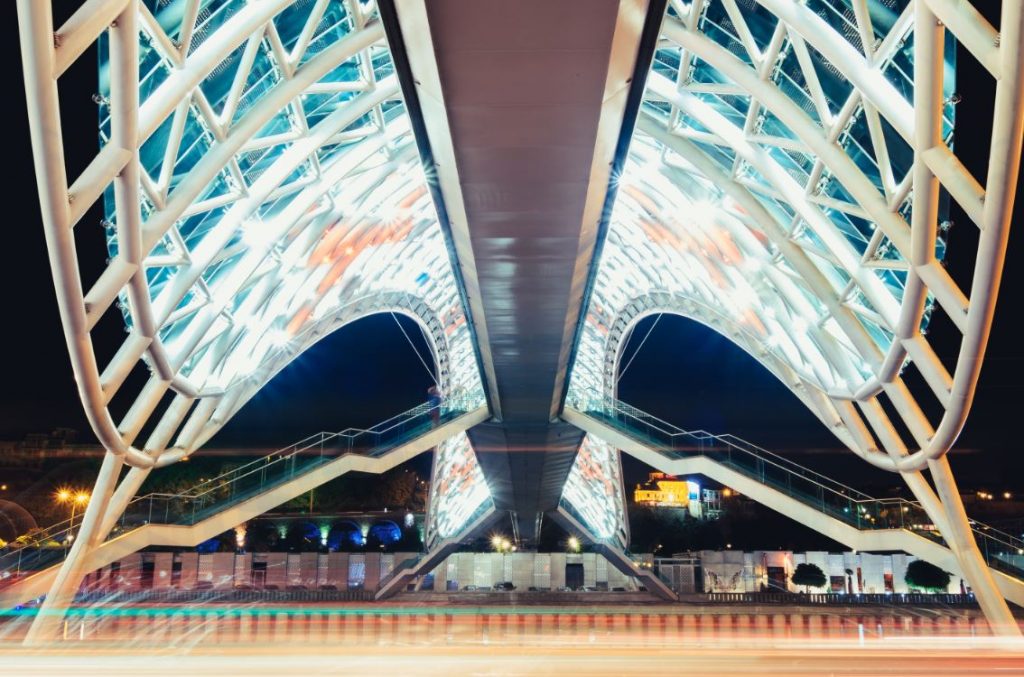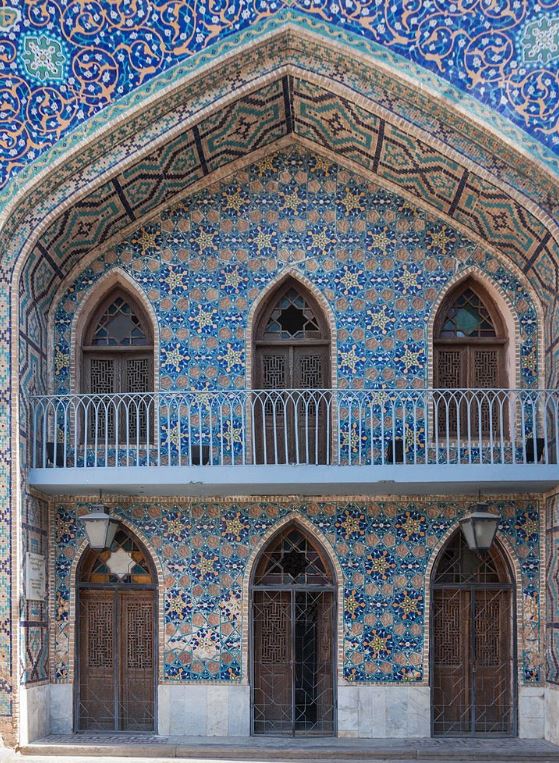Tbilisi, the ancient capital city of Georgia, is a place that has witnessed numerous changes over the millennia. Its unique position, centred in the landmass that separates the Caspian Sea to the east and the Black Sea to the west, has exposed it to a series of invasions throughout its long history.
Archaeological digs in georgia
Archaeological evidence proves a continuous line of human occupation in Tbilisi stretching back to the palaeolithic era. This history has not always been settled and peaceful, with battles, rebellions, riots, and massacres. Countless generations have come and gone, leaving their influences in a number of ways, such as in the architecture. The people of this fascinating city treasure their home and are fiercely proud of it. They enjoy their heritage and are happy to share it. And while they value the historical architecture around them, they are unafraid to embrace the new.

One example of this can be found in the heart of Tbilisi, and it is known as ‘The Bridge of Peace’.
International effort bridge in georgia
The design of this unique structure was entrusted to Italian architect and designer Michele De Lucchi, who had impressed the Georgian government with his previous designs. The two buildings he produced, the Ministry of Internal Affairs, and the Presidential Administration of Georgia, couldn’t be more different in appearance. The former is modernistic, curvaceous, organic, while the latter is grand and fairly traditional, fronted with columns and a glass dome. De Lucchi’s idea for the bridge, however, purposely mirrors the design of the MIA building in its sinuous curves.
Michele de Lucchi
French lighting designer Philippe Martinaud collaborated with De Lucchi to bring the structure alive by installing an elaborate array of illuminations. These bring visitors – tourists and natives alike – flocking to the bridge at night to witness the spectacular sight.
Many of the intricate parts, including the lights and glass, are of Dutch and German origin.
Why is it called The Bridge of Peace?
Considering Georgia’s troubled past, and Tbilisi’s own turbulent history, naming a monument this way seems appropriate. And that is what this structure is; a monument. The administration could have opted for a simple bridge. After all, all they required was a footbridge to cross the river. But they chose to invest in something that made a statement.
The architect himself said of his design:
“A bridge is a structure that joins two points, allowing people to get over an obstacle,and it is also a highly symbolic form of architecture in that it can be an emblem of dialogue between two opposite and divided positions”

The divided positions, in this case, were the ‘Old Town’ and the new neighbourhoods and the area where Rike Park is situated, separated by the Kura (or Mktvari) river. So, the footbridge was installed to join the old to the new, a link from the past to the present. It could be viewed as a symbolic connection of the tempestuous days of history (and even recent history), to the present, more settled days. Hence, the Bridge of Peace.
Some fascinating facts about the Bridge of Peace
- The bridge was officially opened on May 6, 2010.
- It was manufactured and partly constructed in Italy, before being transported to Tbilisi using 200 trucks.
- The steel and glass footbridge is covered by a curving canopy.
- The curving design is said to be reminiscent of a ‘marine animal’, though it has also been likened to a leaf.
- From the bridge, visitors can see the old and the new; the Narikala Fortress, the statue of Vakhtang Gorsalagi (the city’s founder), and the Metekhi Church on one side contrasted with Rike Park, and the stunning Rike Concert Hall on the other.
- The bridge is 160 metres long, and 4.8 metres wide at its widest part.
- The canopy is regarded as a ‘meeting point between architecture and engineering’, featuring a reticular steel and glass structure that floats above the bridge, suspended by four fork-like footings situated at either end.
- The bridge is listed at #13 in the ‘World’s most unusual bridges’.
- The entire structure is fitted with white LED fixtures, with something in the region of 30,000 lights. The roof alone has 1,208 fixtures, with 6,040 high-powered Luxeon Rebel LEDs.
- The glass panels that stretch the full length of the walkway are fitted with low-power linear LED arrays, with 240 motion sensors. These cause the bridge to light up as each pedestrian steps onto the walkway.
- In addition to the sensors on the walkway, four separate lighting programs run every hour in the canopy above, starting 90 minutes prior to sunset and ending 90 minutes after the sun rises. Each of these four modes gives a different effect, such as running in waves from one side to the other, starting at each end and meeting in the middle, lighting various parts in sequence, and twinkling like stars.
- Some of the lighting sends out a message in morse code every hour. The designer, Philippe Martinaud, chose elements from Mendeleev’s Periodic Table – but only the ones present in the human body. These are translated into morse code and flashed out at intervals to the tourists and locals as they pass by – many of them oblivious to the message. Martinaud intended this to be a message of peace; ‘This message is the anthem of life and peace among people and nations’.
Always Ultra Bridge
Not all Georgians were happy with the bridge, however. They view it as being too modern, imposing itself on the banks of the Old Town, and clashing with the heritage buildings situated there. The unusual shape has drawn ridicule in some quarters, earning it the name of the ‘Always Ultra’ bridge, for obvious reasons.
Bridge in Georgia
These criticisms apart, the Bridge of Peace is a remarkable feat of engineering and design, drawing thousands of visitors daily. It is, without doubt, a success, performing its task as both a functional, time-saving access route across the river, as well as being a piece of contemporary design that is a monument in itself. And Tbilisi is all the richer for it. For more interesting articles about Georgia, check out our article on the Narikala fortress, which is viewable from the bridge.




